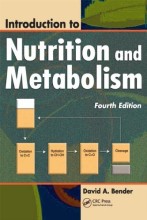The role of ATP in metabolism
9 important questions on The role of ATP in metabolism
Give an example of an anabolic and a catabolic reaction.
Anabolic; protein metabolism
Catabolic; energy (heat/ATP)
How many ATP produce NADH, GTP and FADH?
GTP: 1 ATP
FADH: 1.5 ATP
We can generate ATP direct and indirect, but what is the difference?
Direct (anaerobic); substrate phosphorylation (gaining electrons/hydrogens_
Indirect (aerobic); oxidative phosphorylation (burning; losing electrons/hydrogens)
- Higher grades + faster learning
- Never study anything twice
- 100% sure, 100% understanding
What is dehydrogenation? A direct or indirect form?
Indirect; oxidation of alcohol to an aldehyde group.
What is the role of ATP?
- Diffusion; ATP --> ADP + Pi hydrolyses
- Active trransport of materials across membranes;
Generates proton gradient + Sodium pump
P-type transporters (must be phosphorylated to alow transport)
Metabolic trapping - Phosphorylation: substrate (keto acid to AA by activating the substrate) and enzyme
Explain p-type transporter process.
- Unphosphorylated carrier protein has closed transport pore
- Phosphorylateion of carrier protein (ATP --> AADP + Pi) opens the pore
- Transport of substrate causes dephosphorylation of carrier protein + clossure transport pre
What is metabolic trapping?
Process of capturing glucose --> phosphorylated by hexokinase or glucokinase
This process makes it possible to have glucose in the cell/blood.
What is the difference between glycogenesis, gluconeogenesis, glycogenolysis and glycolysis?
Glycogenesis = Formation of glycogen from glucose.
Gluconeogenesis = Formation of glucose from smaller molecules.
Glycogenolysis = Breakdown of glycogen to form glucose.
Glycolysis = Breakdown of glucose to form energy and smaller molecules.
What is lactic acid pathway?
Metabolic pathway in which glucose --> lactic acid (anearobic respiriation)
The question on the page originate from the summary of the following study material:
- A unique study and practice tool
- Never study anything twice again
- Get the grades you hope for
- 100% sure, 100% understanding
































